I have a test code like below. I am reading from stream, offsetting by 2 positions, and then taking next 2 bytes. I would hope that result would be an array with 2 elements. This does not work though - offset is completely ignored, and full sized array is always returned, with only offset blocks having values. But this means my result table is still very large, it just has a lot of unwanted zeroes
How can I rework below code, so that file.Read() returns only an array of 2 bytes instead of 10 when length = 2 and offset = 2? In real world scenario I am dealing with large files (>2gigs) so filtering out the result array is not an option.
Edit: As the issue is unclear - below code requires me to always define output array that is the same size as the stream. Instead I would like to have an output that is of size of length (in below example I would like to have var buffer = new byte[2], but that will throw an exception because file.Read ignores offset and length and always returns 10 elements (with only 2 of them being read, rest is dummy zeroes).
private byte[] GetFilePart(int length, int offset)
{
//build some dummy content
var content = new byte[10];
for (int i = 0; i<10; i++)
{
content[i] = 1;
}
//read the data from content
var buffer = new byte[10];
using (Stream file = new MemoryStream(content))
{
file.Read(buffer, offset, length);
}
return buffer;
}

